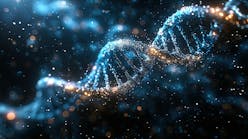Researchers create a new window on leading genetic cause of Alzheimer’s
Scientists have created a method to detect key fat-filled particles known as lipoproteins in the central nervous system, opening a new view into the workings of the brain.
Researchers found that the particles in our nervous system, molecular cousins of the well-known HDL, or “good cholesterol” particles in our bloodstream, are much more diverse than previously thought. Researchers detected more than 300 different proteins associated with the particles, far more than the 16 known previously, that fall into at least 10 different families. These particles are rich in proteins that affect wound healing, the immune response, and the creation and nurturing of brain cells called neurons that are important for cognitive function.
The most common protein on the particles is apolipoprotein E, better known as APOE. Of the three commonly studied forms of APOE, the form known as APOE4 puts people at higher risk of Alzheimer’s disease. One copy of the APOE4 gene makes a person approximately four times as likely to develop dementia; a person with two copies is about 12 times more vulnerable.
The results were published in the journal Science Advances.





